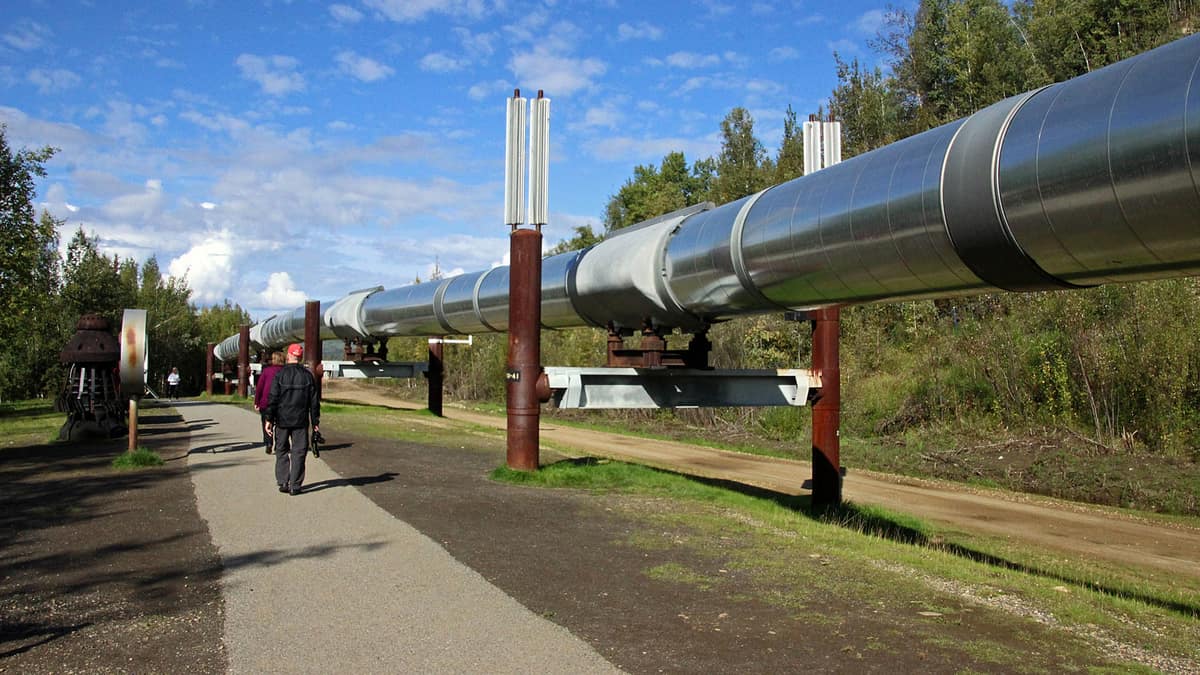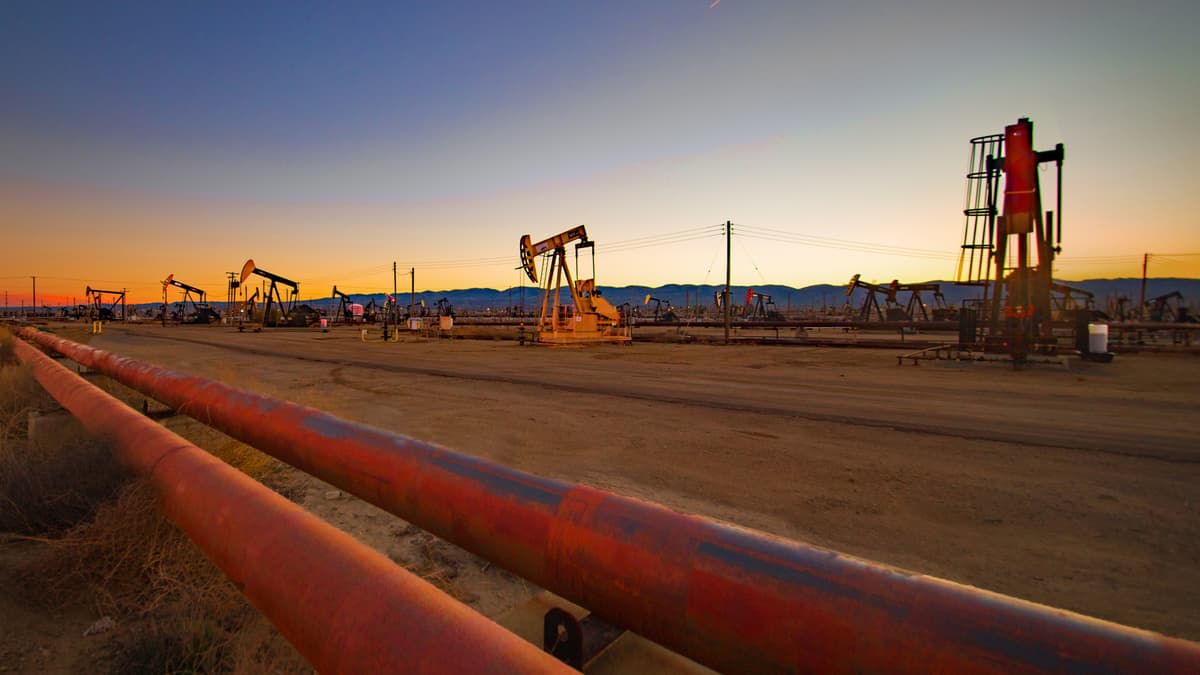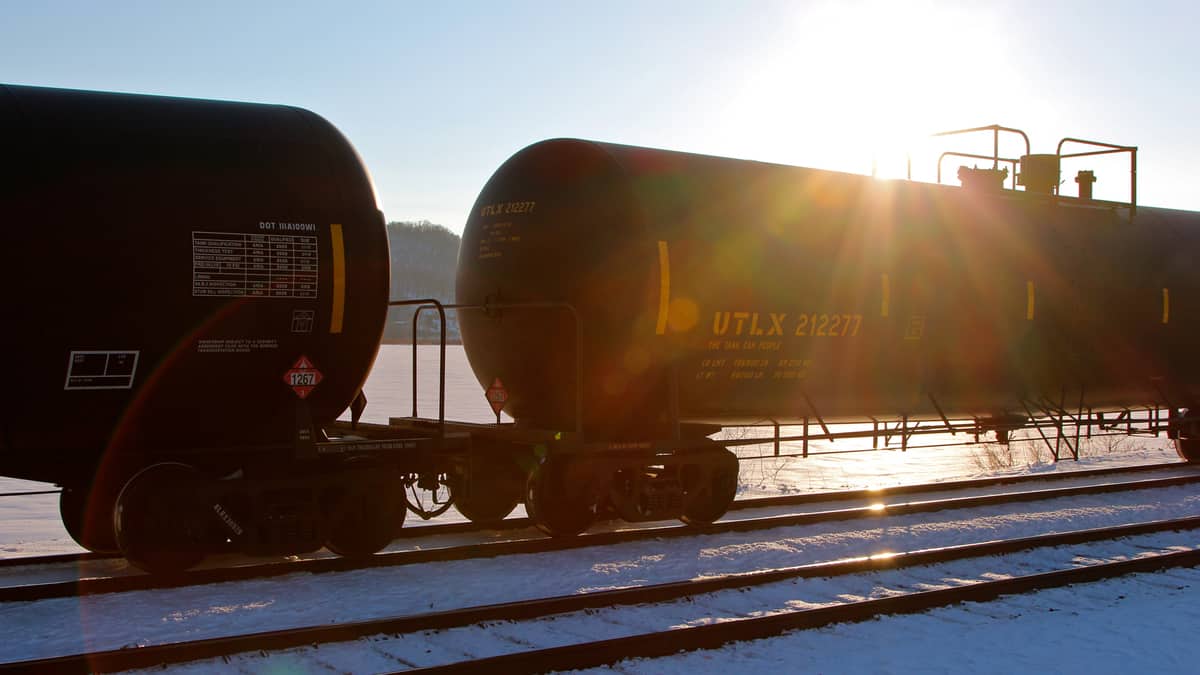The views expressed here are solely those of the author and do not necessarily represent the views of FreightWaves or its affiliates.
A binge shopper’s dream would be to find a merchant offering 100% off all prices. The nightmare would be knowing there is no place to store any of the items purchased for free. Basically, when you come to a wall you back up. This is what the futures price for West Texas Intermediate (WTI) crude oil did on April 20, 2020 just one day before its May contracts expired. The price backed up even beyond the starting point, heading for a valuation well below zero for the first time in history. It sank to negative $37.63 per barrel by the close of trading.
The price started the day at $18.27 per barrel which translates to a 306% drop. Imagine a store front with a sign reading “306%-off Sale Today!” That signals the level of desperation that hit part of the crude oil futures market. There were murmurs of such an event from the previous month. The market for Wyoming Asphalt Sour, a special type of crude oil used in bitumen, saw Mercuria Energy Group Ltd. bid negative $0.19 per barrel. At the same time, while Saudi Arabia and Russia ended their recent price war with a truce on April 9, 2020, the agreed-to cut in production does not begin until May. The 10 million barrels per day cut by “OPEC+” members will last for two months then followed by smaller cuts over a period ending on April 30, 2022.

(Photo credit: Flickr/scott1346)
In effect, WTI buyers – those who could not sell their futures contracts in time – morphed simultaneously into buyers of storage space. In other words, those stuck with long positions in the market (i.e., they owned the underlying asset specified in the contract) were facing contract expirations that would require them to take physical possession of WTI. So many wanted to avoid their impending oil deliveries badly enough that they were willing to pay to give it away rather than burn it or dump it. Since doing either of these things on a large scale is illegal, not to mention very tough on the environment, they were better off signaling a willingness to give it away and, to boot, offer a cash incentive per barrel for any buyer’s trouble. Farmers, of course, are in a different situation since they can let their crops rot in the fields, dump their milk into rivers, etc.
Interestingly, WTI futures contracts cannot be closed out with negotiated cash settlements in place of physical delivery. By contrast, Brent crude futures, another world benchmark, do allow for it. Moving cash electronically is certainly much easier than finding scarce storage capacity. While WTI is better suited for refining gasoline, Brent is more appropriate for diesel. Each product tends to have its own market with different demand and supply activities.

The U.S. Department of Energy (DOE) has been examining options to treat crude oil producers somewhat like farmers. The Agricultural Adjustment Act (AAA) of 1933 handled crop surpluses by paying farmers subsidies, gathered from taxes levied on food processors, as an incentive not to grow anything. Apparently paying people not to work was invented long before the COVID-19 pandemic. In a way this was easier for the government than allowing surpluses to build and then having to buy up excess crops in order to maintain a healthy market price for the farmers who still had to cover their costs of fertilizing, irrigating, harvesting, etc. Of course, to maintain the higher price the government had to store the food and let it rot lest it re-enter the market and depress prices. Though found to be unconstitutional in 1936, because of the scheme of directly taxing Peter to subsidize Paul, AAA was revised in 1938 to better comport with the Commerce Clause of the U.S. Constitution. Since then federal government intervention in agriculture has been the norm.
One option for the DOE is to pay oil exploration companies to keep their reserves untapped. In effect, the oil would stay in the ground and not have to be extracted and added to the U.S. Strategic Petroleum Reserve as a way of keeping it off the market. This reserve contains over 600 million barrels and has capacity for a further 200 million barrels. But it is up to Congress to designate funds to purchase crude oil to add to the reserve. Of course, the real question is whether or not any untapped reserves would ever become viable in a world of lower oil prices. The industry would have to become smaller once the economy is fully opened.

Another way to, in effect, pay a buyer to take on the unwanted WTI is to rent out space on oil tankers or in pipelines – again, signaling a negative price. Logisticians call slow-flow pipelines “inventory in transit.” Of course, oil tankers used as floating storage facilities is certainly a new twist. It is also possible that some investors with long positions might even make a profit by paying someone else to store their WTI. With the forward price for WTI now higher than the spot price, so long as the rental cost per barrel is less than the price spread per barrel it pays to buy the oil now and sell it later. Again, the proviso is that sufficient storage capacity can be found somewhere.
The negative price for May WTI futures was a legitimate signal albeit a strange one. It is strange because the market for crude oil is still functioning; but it is doing so with government-imposed bottlenecks. Only essential workers and businesses are allowed to operate. This means that they demand only as much oil-based energy and products as they need. Everyone else is, in effect, shut out of the market. The futures contracts apparently did not factor in the logistical realities of the shelter-in-place orders lasting so long and being so widespread. Investors can miscalculate but logistical infrastructure surely does not. Investor expectations simply hit the logistical wall. The constraints of time, physical space and location are governed by the unchanging laws of physics.
Still, the market did the best it could in the area of supply chain management. Trying to pass along the storage of a product to a party better able to handle it is sound business practice. Negative price signals showed that it took a lot of coaxing within the market because the aggregate demand for crude oil is at record lows right now. The supply is hard to curtail because it is expensive to shut-down an operating oil well. In effect, it is easier for the producers to operate at a loss in the short run. This exacerbated the capacity crunch.

In time, crude oil demand will bounce back. The problem is that it will come slowly and in stages as various jurisdictions begin to re-open for normal business. The new price floor for WTI futures will not be zero; but it will be cheaper in real terms for quite some time.
New technology has led to more oil discoveries and increased the amount pumped into the market. Yet, at the same time, fuel efficiency and improved transportation planning have meant that oil consumption per passenger and per ton-mile has fallen. This explains the structural fall in oil prices since 2014. Technology provides opportunity while logistics puts up constraints. The June futures contract for WTI ended the trading day at $20.43 per barrel as the May contracts closed-out. Since then the June contract price has been falling. Will this contract as it nears expiration be a repeat of the May contract? If supply cannot be halted while demand remains stalled, prices have nowhere to go but down.










